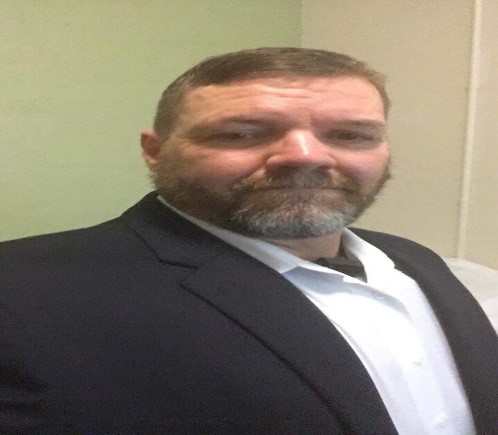
Breaking the Mold – Why Legacy Tactics Fail in Modern Active Shooter Events: Gaps in EMS and Fire Integration
Introduction
In today’s high-threat landscape, the traditional “treat and transport” model used by fire and EMS services is no longer sufficient. Active shooter incidents, often unfolding within minutes, present an urgent and volatile environment where outdated protocols can cost lives. The core of the issue lies in a critical gap—most law enforcement officers are not medical providers, and EMS/fire personnel are not trained or authorized to operate in hot or even warm zones. This lack of integration places medical rescue capabilities out of reach when they are needed most, during the initial moments of an attack when rapid intervention is essential.
To prevent avoidable deaths, public safety agencies must adopt a modern, interdisciplinary response model. Law enforcement must continue to “stop the killing,” but they cannot be left alone in the hot zone. Medical Rescue Teams (MRTs) must be trained, equipped, and embedded in the tactical response to “stop the dying.” Anything less ensures that our communities will continue to suffer preventable losses. The time for a cultural and doctrinal shift is now.
Understanding the Modern Threat
Active shooter incidents are not new, but their complexity and frequency have evolved significantly since the 1966 University of Texas Tower shooting. Over time, law enforcement and social scientists have worked to define behavioral patterns and preventative strategies, but the tactical response component has failed to keep pace. Despite comprehensive reviews and recommendations after mass casualty events, the system still operates within siloed disciplines—police handle threats, EMS handles treatment, and fire supports logistics.
But active shooter scenes are not static. They are dynamic, chaotic, and often re-escalate. This volatility makes it essential for EMS and fire personnel to be capable of operating in semi-secured or unsecured environments. Unfortunately, current doctrine keeps them staged safely in cold zones, often hundreds of yards away. The result is a deadly time gap between the initial injury and the delivery of life-saving care.
Where Legacy Fails: The Overreliance on Law Enforcement Alone
The current model places the entire burden of both neutralizing the threat and managing casualties on law enforcement. Officers are expected to perform immediate threat engagement while also providing medical aid to victims—and potentially to themselves or fellow officers. While many carry Individual First Aid Kits (IFAKs) and receive basic Tactical Combat Casualty Care (TCCC), this approach is insufficient when faced with multiple critical casualties.
Law enforcement simply cannot be expected to handle tactical engagement, room clearance, scene security, and advanced trauma care simultaneously. When MRTs are not integrated into the initial response, care is delayed, resources are mismanaged, and lives are lost that could have been saved with faster access to trained medical providers.
The Disconnect: EMS and Fire Outside the Fight
EMS and fire agencies are often highly skilled in trauma care but remain largely unprepared or unequipped to function within hot or warm zones. Traditional EMS doctrine reinforces a model of scene safety and delayed entry, waiting for law enforcement to secure the environment. This approach, while understandable from a risk management perspective, results in unacceptable delays during mass casualty incidents.
Fire departments have made great strides in command structure and incident management through consistent use of the National Incident Management System (NIMS), but they rarely train for dynamic, high-threat responses like active shooter incidents. EMS, often stretched thin by call volume, lacks time or resources to routinely train for tactical integration. This systemic under-preparation leaves a gap between the neutralization of the threat and the delivery of care—a gap that can mean the difference between life and death.
Bridging the Gap: Tactical EMS and Medical Rescue Teams (MRTs)
The solution lies in developing and deploying Medical Rescue Teams (MRTs)—interdisciplinary units composed of EMS and fire personnel trained to operate in hot and warm zones alongside law enforcement. These teams are equipped with ballistic protection, understand tactical movement, and are capable of providing immediate point-of-injury care in hostile environments.
MRTs represent a fundamental shift from reactive care to proactive, embedded treatment. They don’t wait for the scene to be secure. They move with law enforcement or shortly after entry teams, providing triage, hemorrhage control, airway management, and other critical interventions in real-time. This model is not only faster, it is life-saving.
The Role of Zone Integration
Traditional emergency response models are divided into cold, warm, and hot zones. Cold zones are fully secure and safe; warm zones are areas with a potential but reduced threat; hot zones are areas of active threat engagement. In legacy systems, EMS and fire personnel are restricted to cold zones, leading to a “care vacuum” in the other zones.
Zone integration challenges this model by introducing scalable safety protocols that allow MRTs to operate in warm zones under protection and with close coordination. Law enforcement continues to clear and secure areas, but MRTs are right behind them—or in some cases, embedded—so that care is not delayed.
Zone integration also improves interoperability. When all agencies understand zone definitions, communications protocols, and responsibilities, it reduces chaos and confusion on scene. This integration ensures that once law enforcement begins clearing and securing a location, MRTs can move in rapidly to begin life-saving care.
Interdisciplinary Response: Changing the Culture
At the core of this shift is the concept of interdisciplinary response—where law enforcement, EMS, and fire operate under a shared doctrine, using common language, communication systems, and tactical protocols. This model demands more than joint training; it requires a cultural evolution where each agency understands and respects the capabilities of the others.
Interdisciplinary response removes the barriers that currently cause critical delays. It prepares EMS and fire personnel to function in unpredictable environments and gives law enforcement the medical support they need in real-time. It also streamlines command and control functions, allowing incident commanders to coordinate a true team response rather than managing three separate entities.
For this approach to be successful, leadership from all three disciplines must buy in. Agencies must invest in joint exercises, shared SOPs, interoperable communications equipment, and cross-disciplinary education. Most importantly, they must abandon the notion that safety comes from separation—instead recognizing that safety and survivability come from integration.
A Simultaneous Approach: Stop the Killing, Stop the Dying
Active shooter events demand a two-pronged, simultaneous approach. The first priority is to stop the killing—law enforcement’s role to neutralize the shooter. The second, equally urgent priority, is to stop the dying—MRTs providing point-of-injury care.
This cannot be achieved through the current model, where medical responders wait for an “all clear” that comes too late. Instead, MRTs must deploy with law enforcement or immediately after a zone is partially cleared. Their mission is not just to treat, but to triage, stabilize, and coordinate rapid evacuation to Casualty Collection Points (CCPs). MRTs use proven triage tools and can identify which patients need tourniquets, airway intervention, or immediate transport—ensuring that resources are used efficiently and lives are preserved.
The Call to Action
Breaking the mold requires breaking the mindset that has kept EMS and fire in the background. This is not about reckless exposure or unnecessary risk—it is about deliberate preparation, intelligent zone integration, and shared responsibility. It is about recognizing that public safety is not a siloed effort, but a synchronized mission.
Every agency must ask itself: Are we prepared to meet the next active shooter event with the speed, coordination, and adaptability it demands? Or will we continue relying on outdated models that leave victims bleeding in the gap between neutralization and care?
The future lies in tactical EMS, MRTs, interdisciplinary response, and integrated zone operations. We owe it to our communities—and to ourselves—to break the mold and build a better, faster, and more unified model of saving lives.
